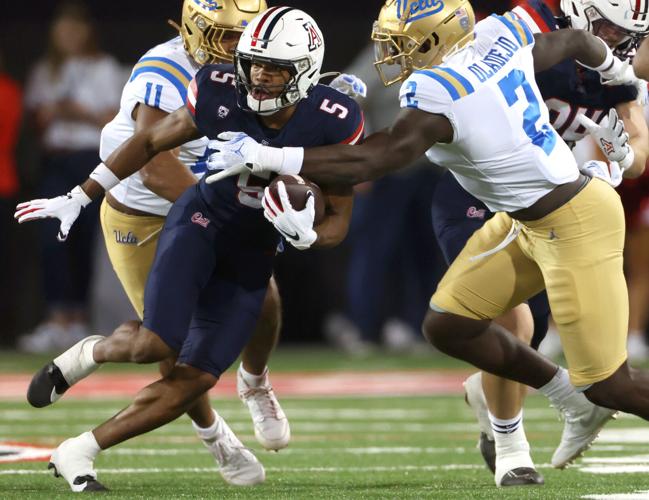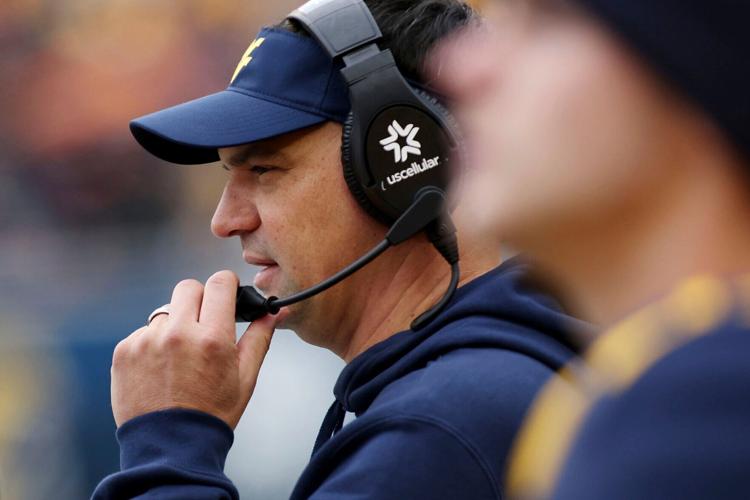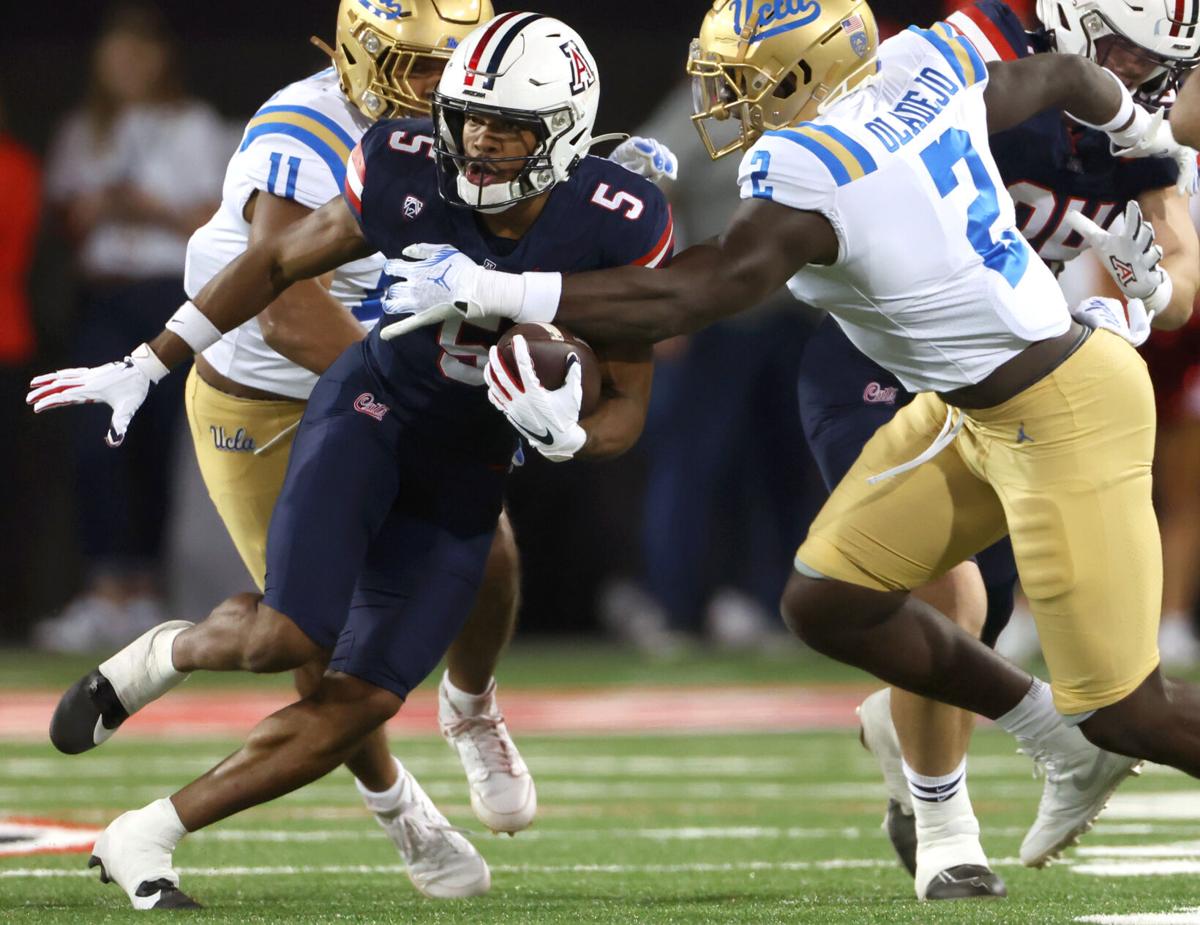We are living in a time of division — except in college football.
Coinciding with the rampant realignment that has reshaped the sport, college football conferences have almost entirely gotten rid of divisions. In their place, we have bloated, overstuffed, geographically illogical mega-leagues, including the 18-team Big Ten and 16-team Big 12.

Michael Lev is a senior writer/columnist for the Arizona Daily Star, Tucson.com and The Wildcaster.
(Trying to explain this to someone who doesn’t follow sports is like when my wife tries to explain tax credits to me. Blank stares abound.)
This trend is not beneficial for college football, whose decision-makers have a special knack for not considering potential unintended consequences.
Without divisions or something approaching a round-robin — the Pac-10 had it; the Pac-12 came close — two teams in the same conference can play league schedules that barely resemble each other. That can — and will — lead to certain teams benefiting from softer schedules while others slog through brutally difficult slates.
The value of a long regular season, in theory, is that it rewards sustained success. But if one team has a relatively easy schedule while another has a much harder one — we’ll get into some examples in a bit — it could come down to luck more than merit.
Do you enjoy tiebreakers? Well, it’s entirely possible, because of the way these conferences are now set up, that multiple teams will end up with the same record. In that scenario, the participants in league title games will be determined by tiebreaking scenarios. Oh what fun we’ll have parsing those!
Why has every FBS conference aside from the Sun Belt (they call it the “Fun Belt” for a reason) done away with divisions? I can sum it up in two words: “Because Iowa.”
That’s not really fair to the Hawkeyes, who aren’t the only ones to end up on the wrong end of Big Ten Championship Game blowouts. Wisconsin, Northwestern and Purdue also have contributed to that cause.

Michigan running back Blake Corum (2) celebrates with teammates after scoring on a 2-yard touchdown run during the first half of the 2023 Big Ten Championship Game against Iowa in Indianapolis.
After the Big Ten adopted East and West Divisions in 2014, the East pulled off a clean sweep, going 10-0. Only three of those games were decided by one score. The average margin? Nearly 21 points. Fittingly, the first and last Big Ten title games pitting East vs. West ended in one-sided shutouts.
Because of disparities like that, conference leaders were motivated to get their two best teams into the championship games. That meant an end to divisions.
I totally get that. But something gets lost in that process. Regional rivalries have always been the lifeblood of college sports. Ditching divisions dilutes it.
There’s also this: The biggest game of the year in college football — Michigan vs. Ohio State — could be immediately followed by ... a rematch between Michigan and Ohio State, if they’re still the top two teams in the standings. Talk about a buzzkill.
At least the Big Ten plays nine conference games. But now that it has 18 members, each team faces only nine of 17 possible opponents.
The SEC ratio is similar: 8/15. In the ACC, which now has 17 teams for football, it’s 8/16 — which means that it’s conceivable that a team could face an entirely different slate from one of its so-called rivals with whom it’s battling for the conference crown.
Among the Power Four leagues, the Big 12 actually has the best ratio: 9/15. But there’s still plenty of room for schedule disparities — especially compared to the Pac-12.
In the league where Arizona used to reside, each of its cohorts in the Pac-12 South would have, at a minimum, six common opponents. Each team would face the other five in the division, plus four from the Pac-12 North. You’d miss two teams from the other division each year (although USC and UCLA played Stanford and Cal annually).
Among the teams predicted by the media to finish in the top half of the Big 12, the schedules mostly overlap.
Oklahoma State shares seven opponents with Arizona. (We are not including previously scheduled nonconference games against conference foes in this exercise.) Utah, Kansas and UCF each share six. Kansas State and Iowa State each share five. Reasonable, right?

West Virginia head coach Neal Brown looks on during the first half of an Oct. 21, 2023, game against Oklahoma State in Morgantown, W.Va.
Here’s where it gets wonky: West Virginia shares only two opponents with Arizona — UCF and Texas Tech (again, not counting Kansas State, which is a noncon game for the UA). For most of the Big 12 season, the Wildcats and Mountaineers — who do face each other on Oct. 26 in Tucson — will be flying in separate orbits.
The difference between their schedules goes beyond whom the play. There’s also, at least on paper, a massive disparity in strength of schedule.
Again using the preseason media poll — obviously not the most precise gauge, but work with me — Arizona’s nine opponents average a 10th-place finish. West Virginia’s fall somewhere between sixth and seventh.
(I used a simple points system to come up with this metric, adding up the predicted finishes of each team and dividing by the number of games played. So Utah would be worth one point, ASU worth 16, etc. Arizona’s total is 90; West Virginia’s is 60.)
In conference play — the games that count in the standings — Arizona doesn’t face the teams picked to finish second (Kansas State), third (Oklahoma State), fourth (Kansas) or sixth (Iowa State). West Virginia faces all of them.
Advantage, Wildcats. But looking at this objectively, is that the best way to decide a conference race? Wouldn’t two eight-team divisions — where you play each of the others in your division plus two crossover opponents — make for a fairer title chase?
One more reason I prefer divisions: They foster hope.
If the Sun Devils were picked last in the Big 12 West, they would have only seven teams to leapfrog to prove the pundits wrong and get into the conference championship game. And they’d get to face each and every one.
As it stands now, ASU would have to climb over twice that many. And it’s not as if being in 12th or 13th place in a 16-team league is a desirable position. More like no-man’s-land.
In the real world, unity is always better than division.
In college football, it’s the opposite — even if the powers-that-be refuse to recognize it.
Arizona football head coach Brent Brennan discussed season expectations, the Wildcats' roster, recruiting, and joining a new conference at Big 12 Media Days in Las Vegas. (Justin Spears / Arizona Daily Star)








